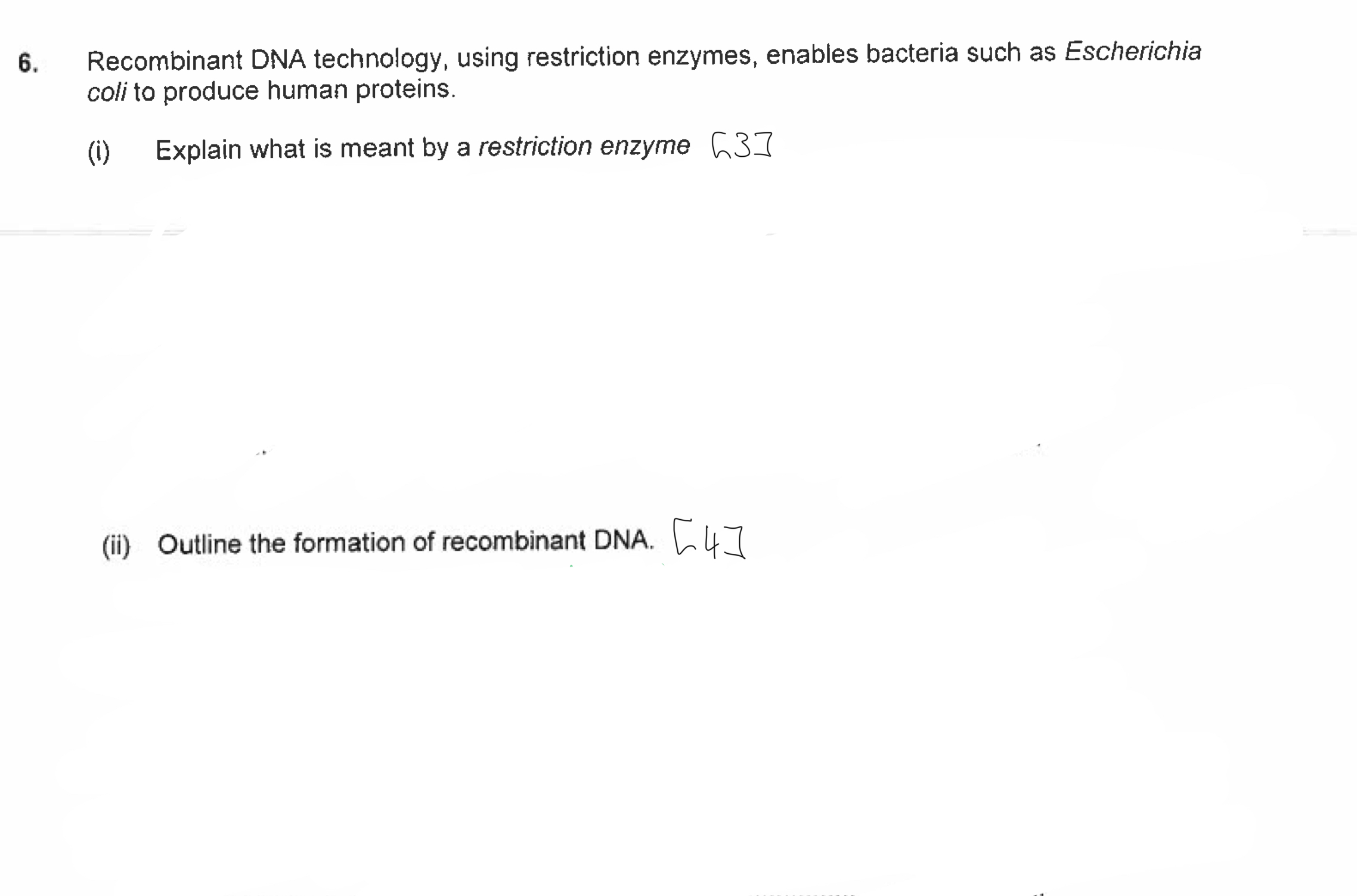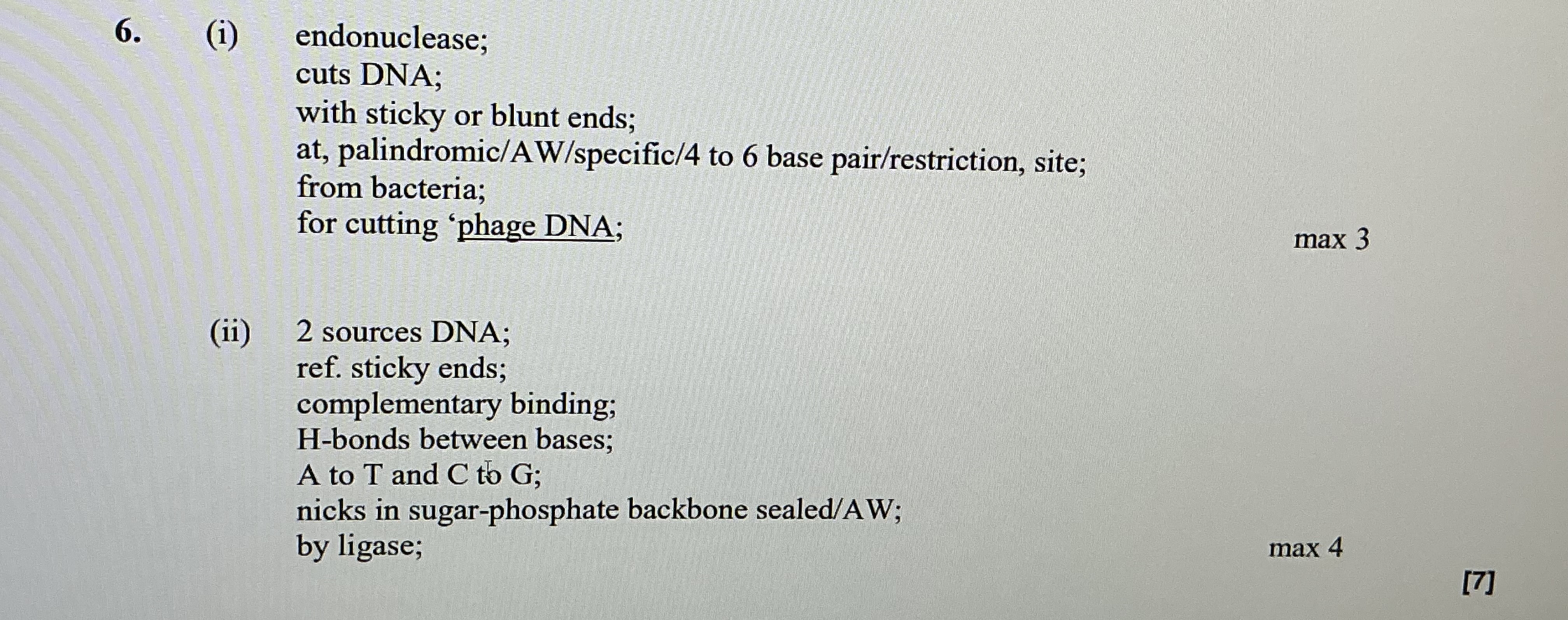Manipulating Genomes
1/20
Earn XP
Description and Tags
Name | Mastery | Learn | Test | Matching | Spaced |
|---|
No study sessions yet.
21 Terms
What is DNA sequencing?
Identifying the base sequence of a DNA fragment
How have sequencing methods changed over time [2]
Used to be a manual process,however has now become automated
Entire genomes can now be read at a faster pace
Give some benefits of genome-wide comparisons [2]
Comparing between species allows us to determine evolutionary relationships
Comparing between individuals of the same species allows us to tailor medical treatment to the individual and track mutations for certain genetic disorders
How can DNA sequencing be used in synthetic biology?
Knowing the sequence of a gene allows us to predict the sequence of amino acids that will make up the polypeptide it produces, which allows for developments in synthetic biology
What is DNA profiling?
Identifying the unique areas of a person’s DNA, in order to create a profile that is individual to them
Give three uses of DNA profiling
Matching suspect DNA to samples of DNA found in a crime scene for forensics
Screening for base sequences responsible for inheritable diseases in medicine
Paternity testing
How can we amplify DNA fragments in order to sequence them?
Use PCR to make millions of copies of a fragment, which are then cut at different lengths in order to be sequenced
Describe the reaction mixture in the first stage of PCR
Contains DNA fragments to be amplified, complementary primers, free nucleotides and DNA polymerase
Summarise the process of amplifying DNA fragments using PCR [4]
Heated to break apart the DNA strands
Cooled to allow primers to anneal
Heated again to activate DNA polymerase and allow free nucleotides to join
New DNA acts as a template for next cycle
Describe the process of gel electrophoresis, linking to DNA profiling [3]
DNA fragments of varying lengths are placed at one end of a slab of gel
Electric current is applied, causing DNA fragments to move towards the other end
Shorter fragments travel further, and the pattern of bands is unique to every individual
What is meant by the term genetic engineering?
Where a DNA fragments from one organism is inserted into the DNA of another organism,sometimes across different species, via a vector
Summarise the process of isolating a DNA fragment [3]
Restriction enzymes called restriction endonucleases cut DNA at specific sequences
Different REs cut at different points, but one RE will always cut at the same sequence
Using particular REs allows you to cut out a certain gene
Summarise the process of inserting a DNA fragments into a vector [2]
A plasmid from the vector is cut using the same restriction enzymes to ensure the sticky ends are complementary
DNA ligase joins the fragment and plasmid together
Summarise the process of inserting a vector into a host cell
The host cells are mixed with the vectors in ice-cold solution, then shocked to increase the permeability of the cell membrane (electroporation) which encourages the cellls to take up the vectors
Give some ethical issues around genetic engineering [4]
Insect resistance can be introduced to crops
Pharming
GE pathogens can be produced for research
GE seeds would be hard to acquire for poorer farmers
What is gene therapy?
Replacing a faulty allele with a normal allele
What are the two types of gene therapy?
Somatic and Germ Line
What is the difference between somatic and germ line gene therapy [2]
Somatic targets body cells, while germ line targets sex cells
Somatic needs repeating due to short cell life of body cells, while germ line is permanent and will affect future offspring
What are the positive ethical considerations to gene therapy?
Potential to treat genetic disorders
Prolong lives with better QoL
Reduce number of sufferers of a disease
What are the negative ethical considerations of gene therapy?
Potential to harm patients,e.g over-expression
Very expensive
Could be used in non-medical ways, e.g designer babies

